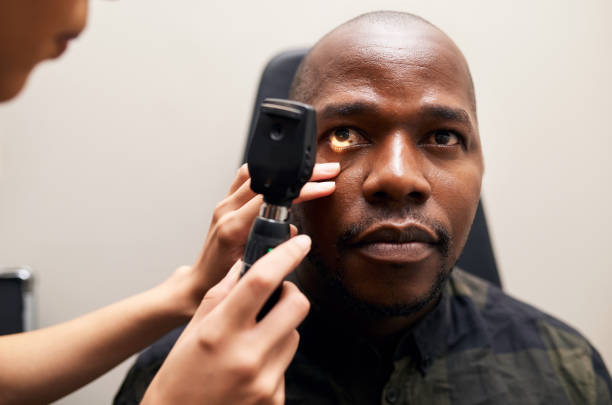Glaucoma, often called the “silent thief of sight,” is a serious eye condition that can cause irreversible vision loss without noticeable symptoms. Early detection and treatment are crucial to preventing significant vision loss. This comprehensive guide aims to educate and inform you about glaucoma, its symptoms, risk factors, and treatment options to help you take proactive steps in safeguarding your vision.
Understanding Glaucoma
Glaucoma is a group of eye conditions that damage the optic nerve, which is essential for good vision. This damage is often caused by abnormally high pressure in your eye, known as intraocular pressure. The optic nerve transmits visual information from your eye to your brain, and any damage to this nerve can lead to vision loss or blindness.
There are several types of glaucoma, but the most common ones include:
- Primary Open-Angle Glaucoma: The most common form, where the drainage angle formed by the cornea and iris remains open, but the trabecular meshwork is partially blocked, causing pressure buildup.
- Angle-Closure Glaucoma: Also known as closed-angle glaucoma, it occurs when the iris bulges forward to narrow or block the drainage angle formed by the cornea and iris.
- Normal-Tension Glaucoma: Optic nerve damage occurs even though your eye pressure is within the normal range. The exact cause isn’t fully understood but may involve a sensitive optic nerve or reduced blood flow to the optic nerve.
Symptoms to Watch For

Glaucoma progresses slowly, so symptoms may not be noticeable until significant damage has occurred. Regular eye checkups are essential for early detection. Here are some symptoms to be aware of:
- Patchy Blind Spots: These can occur in your side (peripheral) or central vision, often in both eyes.
- Tunnel Vision: This happens in the advanced stages of the disease.
- Severe Headache: Especially if it is sudden and accompanied by other symptoms.
- Eye Pain: Persistent or recurring.
- Nausea and Vomiting: Often linked with severe eye pain.
- Blurred Vision: Especially if it occurs suddenly.
- Halos Around Lights: Seeing rings around lights.
- Eye Redness: Persistent redness in one or both eyes.
If you experience any of these symptoms, it is crucial to see an eye doctor immediately.
Risk Factors
Certain factors can increase the risk of developing glaucoma:
- Age: People over 60 are at higher risk, although glaucoma can occur at any age.
- Family History: If glaucoma runs in your family, you are more likely to develop it.
- Medical Conditions: Diabetes, heart disease, high blood pressure, and sickle cell anemia increase the risk.
- Eye Conditions: Severe eye injuries, eye surgeries, and conditions like high myopia (nearsightedness) can also increase the risk.
- Ethnicity: People of African, Asian, and Hispanic descent are at higher risk.
- Prolonged Use of Corticosteroid Medications: Especially when applied to the eyes
Prevention and Management
While glaucoma damage can’t be reversed, treatment and regular checkups can help slow or prevent vision loss, especially if you catch the disease in its early stages. Here are some key management strategies:

- Regular Eye Exams: Comprehensive eye exams can detect glaucoma early before significant damage occurs. It is recommended to have a baseline eye screening at age 40, with regular follow-ups as advised by your doctor.
- Prescription Eye Drops: These are often the first line of treatment to reduce eye pressure. They work by decreasing the production of fluid within the eye or increasing its outflow.
- Oral Medications: These can help reduce eye pressure by improving fluid drainage or decreasing fluid production.
- Laser Treatment: Laser therapy can help open blocked drainage channels within the eye, allowing fluid to drain more effectively.
- Surgery: Surgical options include creating a new drainage path for fluid or improving existing drainage to lower eye pressure.
Conclusion
Glaucoma is a serious condition that requires early detection and ongoing management to prevent vision loss. Regular eye exams are essential, especially if you are at higher risk. By understanding the symptoms, recognizing risk factors, and adhering to treatment plans, you can protect your vision and maintain a good quality of life. Take care of your eyes and ensure you get regular checkups to catch glaucoma early, potentially saving your sight.


